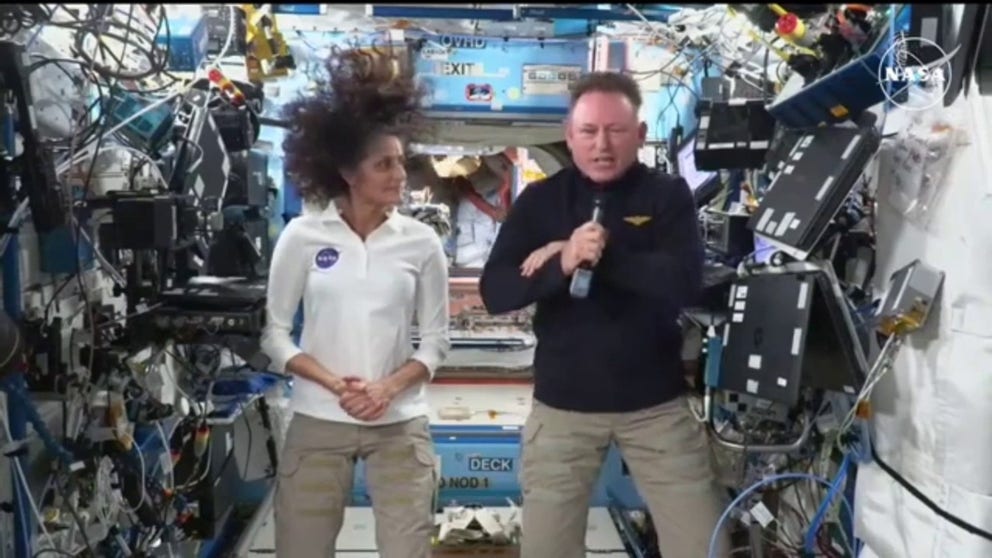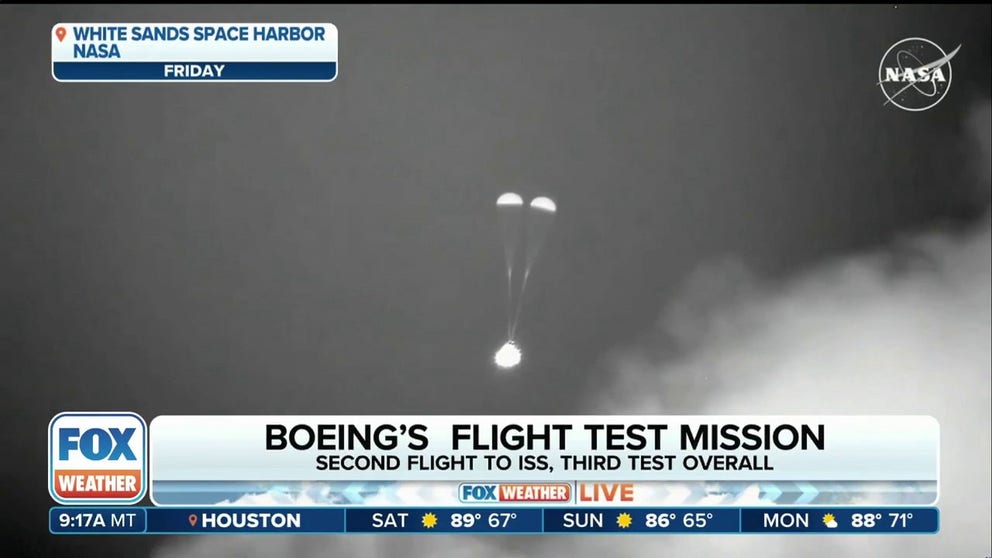One of two NASA astronauts on troubled Boeing Starliner mission announces retirement
Boeing's troubled Starliner spacecraft successfully returned home to Earth in September 2024 without astronauts, marking a major milestone of a tumultuous journey that turned from an eight-day test mission into a nearly 300-day episode.
Hear from the Boeing Starliner crew in their first public remarks
NASA astronauts Butch Wilmore and Suni Williams arrived at the International Space Station on June 6 but NASA considered the risk too great to return the astronauts home on the troubled Boeing Starliner. The crew’s next opportunity to return home will be in February aboard SpaceX capsule.
HOUSTON – After more than two decades of service with NASA and four spaceflights, including the troubled Boeing Starliner mission, astronaut Barry "Butch" Wilmore has decided to retire, the space agency announced.
During Wilmore’s 25-year-long career, the veteran astronaut conducted five spacewalks and spent more than 460 days in space during missions involving the Space Shuttle Atlantis, the Russian Soyuz, SpaceX’s Crew Dragon and most recently, Boeing’s Starliner.
"Butch’s commitment to NASA’s mission and dedication to human space exploration is truly exemplary," Steve Koerner, acting director of NASA’s Johnson Space Center in Houston, said in a statement. "His lasting legacy of fortitude will continue to impact and inspire the Johnson workforce, future explorers, and the nation for generations."
FUTURE OF NASA’S MEGA MOON ROCKET APPEARS IN DOUBT FOLLOWING MAJOR BOEING ANNOUNCEMENT
Wilmore’s final mission was aboard the Boeing Starliner spacecraft, which launched in June 2024.
While the trip to the International Space Station was originally expected to last around eight days, the event turned into a nearly year-long saga, with NASA electing to return the Starliner spacecraft to Earth without Wilmore or his fellow astronaut, Suni Williams.
At the time, the space agency was concerned about issues surrounding Starliner’s propulsion system, including whether the spacecraft could safely re-enter Earth’s atmosphere.
Instead of risking the astronauts’ well-being, NASA opted to return Wilmore and Williams to Earth aboard a SpaceX Crew Dragon, which essentially acted as a rescue mission.
During the extended mission, Wilmore performed many experiments and added more than 5 hours to his 32-hour spacewalk career.
In a statement, Wilmore reflected on his journey to space and the deep sense of awe he felt while exploring beyond Earth.
"From my earliest days, I have been captivated by the marvels of creation, looking upward with an insatiable curiosity. This curiosity propelled me into the skies, and eventually to space, where the magnificence of the cosmos mirrored the glory of its creator in ways words can scarcely convey," Wilmore stated. "Even as I ventured beyond Earth’s limits, I remained attuned to the beauty and significance of the world below, recognizing the same intricate design evident among the stars is also woven into the fabric of life at home."
SEE THE OBJECTS HUMANS LEFT BEHIND ON THE MOON
Williams has been an astronaut since 1998 and continues to be active with the space agency.
The retired U.S. Navy officer first flew to the ISS aboard the Space Shuttle Discovery in 2006 and has clocked more than 600 days in space.
The total falls just short of the female spaceflight record held by astronaut Peggy Whitson, who has spent approximately 695 days in space and now works with the privately funded Axiom Space group.
Boeing Starliner returns safely to Earth Friday night
Boeing's troubled Starliner spacecraft successfully returned home to Earth Friday night without astronauts, marking the end of the tumultuous journey that turned from an eight-day test mission into a three-month odyssey that left two NASA astronauts with an extended and unplanned stay in space






